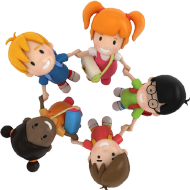 Whether you heard concerns from your child’s pediatrician, teacher or well-meaning relative or you began searching for speech-language therapy due to your own persistent worries, the source of concern is what matters most: your child’s speech is difficult to understand. You have likely gained immense skills in the art of translation and can understand your child with little to no difficulty, but you continue to hear it from others: “What did he/she say?”
Whether you heard concerns from your child’s pediatrician, teacher or well-meaning relative or you began searching for speech-language therapy due to your own persistent worries, the source of concern is what matters most: your child’s speech is difficult to understand. You have likely gained immense skills in the art of translation and can understand your child with little to no difficulty, but you continue to hear it from others: “What did he/she say?”
Children’s articulation errors are often viewed as age-appropriate, temporary and even cute. Indeed, they can be. For many children, however, articulation errors and reduced clarity of speech last far longer than what’s typically expected in a child’s speech sound development. Children that have difficulty being understood by both adults and peers may experience varying levels of frustration and social isolation. Low or reduced self-confidence is another common effect of low speech intelligibility, even in children as young as three years old. When verbal communication is negatively impacted on a daily basis and the child experiences frustration from not being understood, it’s likely that your child needs speech therapy. Here’s what to expect…
The Evaluation Process
Intelligibility levels are subjective measures of estimating a child’s ability to be understood by others, and may vary greatly from person to person, depending on the relationship and level of familiarity of the listener to the child. Objective measures are those by which a speech-language pathologist can obtain during a comprehensive speech-language evaluation. A standard score of performance will indicate how the child’s speech sound production skills compare to those of age- and gender-matched peers (as an aside, girls typically acquire speech sounds at a younger age than boys).
By using a combination of standardized measures and informal observation, the SLP then uses his or her clinical judgment to determine whether speech-language services are recommended. In some cases, subjective measures including clinical observation, intelligibility estimations, and an analysis of the type of speech sound errors may indicate the need for services despite “average” standard scores and are therefore crucial assessment measures in determining a child’s eligibility for speech services based on their unique, individualized challenges.
In ranges from mild, moderate to severe (and very rarely to profound), your child may be diagnosed with an articulation disorder or a phonological disorder. While an articulation disorder refers to an identified deficit in motor movements required for accurate speech sound productions,a phonological disorder refers to a child’s difficulty understanding the sound system and speech rules of our language that many children acquire naturally in typical development. They are more complex than articulation deficits and pose a greater risk that a child will develop other learning disabilities and/or problems when learning to read or spell.
The Therapy Process
During the process of articulation therapy, it’s important to keep in mind that it often takes substantial time for a child to work their way up the “ladder,” or hierarchy, of speech sound achievement before they correctly produce target sounds in spontaneous speech. The typical “ladder” works in the following sequence:
Single sounds → syllables → single words (sounds in various positions of words) → phrases → sentences → spontaneous speech
Functional carryover is the most difficult, so it is unrealistic to expect a child to produce correct target sounds in his or her spontaneous speech without reminders or cues. It is important to be positive, encouraging, and consistent – not insistent! For example, insisting that your child needs to practice learned techniques for ALL words they produce in spontaneous speech can be very frustrating and may reduce motivation.
Follow-Through at Home and in the Environment
Consider using a target sound chart at home, placing stickers or stamps in boxes during structured sit-down speech time and/or whenever you “catch” your child using his/her target sounds in speech. When the chart is filled, your child may earn a “treat” (i.e., a healthy treat/, small prize, special one-on-one time with you, etc.)
When it comes to speech-language therapy, the type, quality and duration of therapy will differ greatly from person to person. Each SLP, while incorporating tried-and-true therapy methods, will also have their own therapeutic style to which each child will respond differently. Once you find that ideal connection for your little one, make sure to get as involved as you can in helping carry over learned skills into functional areas of the child’s life. Structured therapy during the week will do little to change learned speech patterns if those skills are not incorporated into daily life outside of the speech room. So know what to expect…and expect to be in the know!


